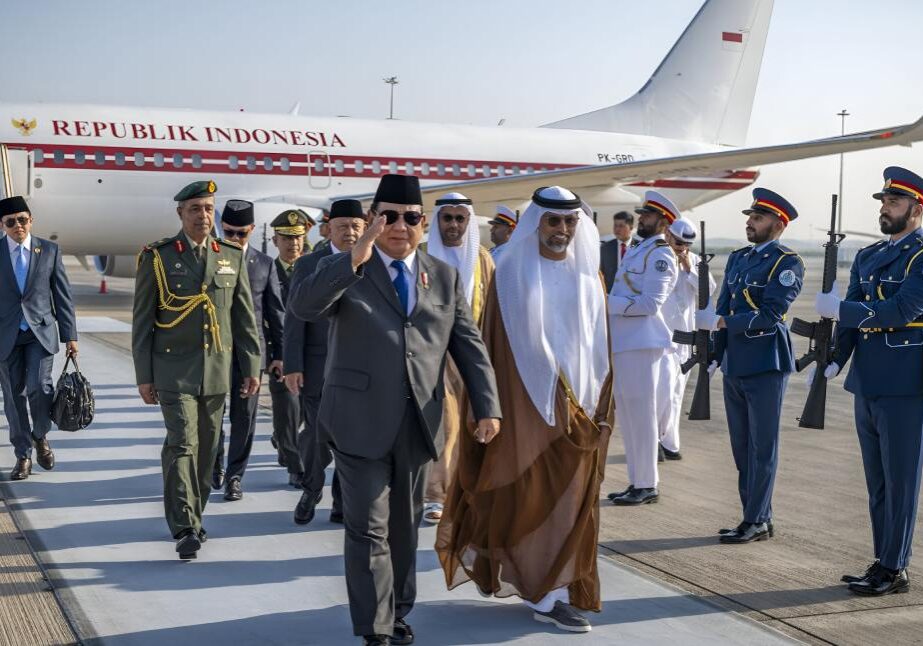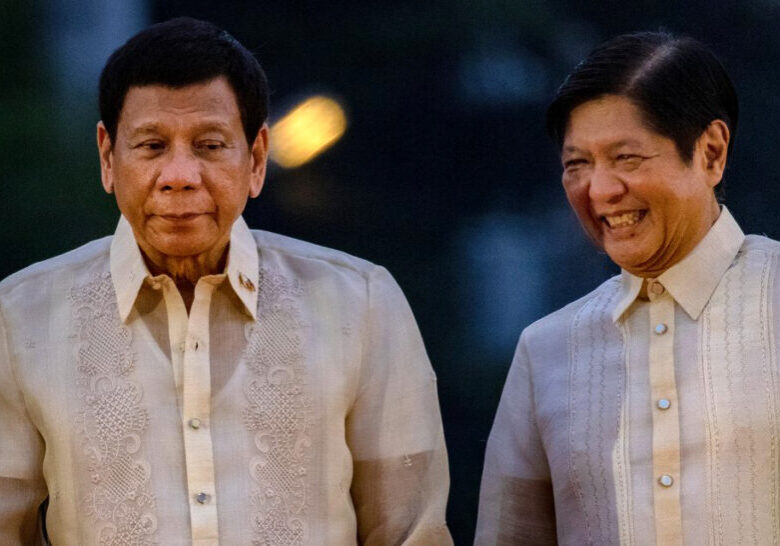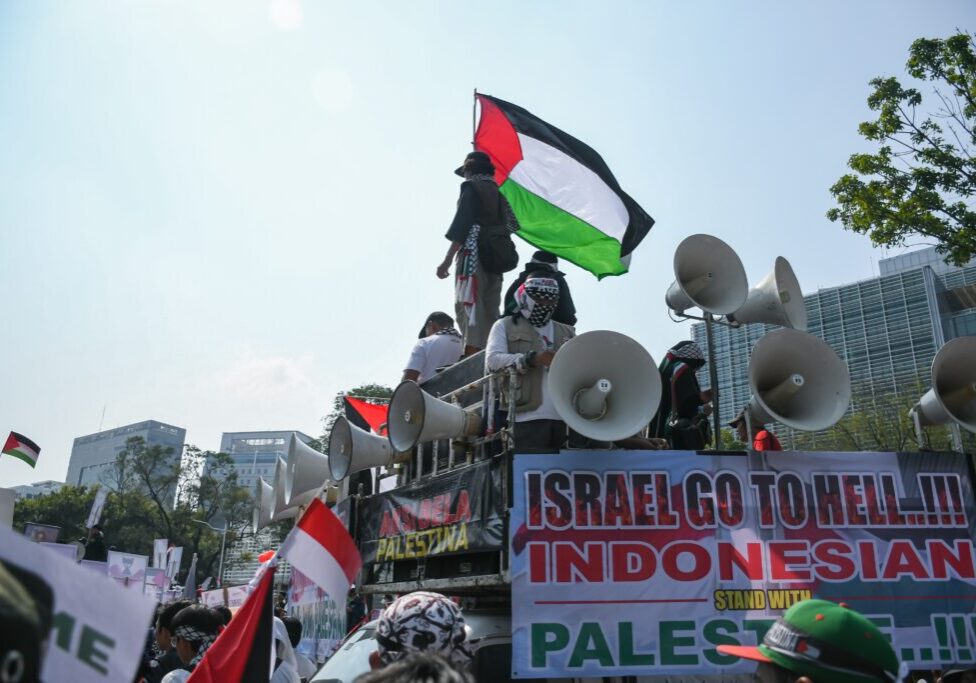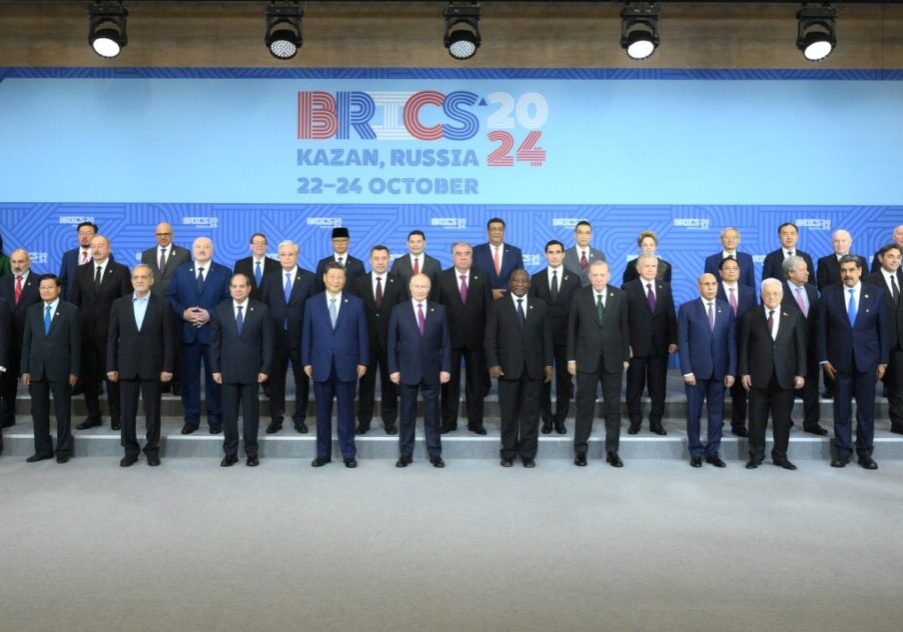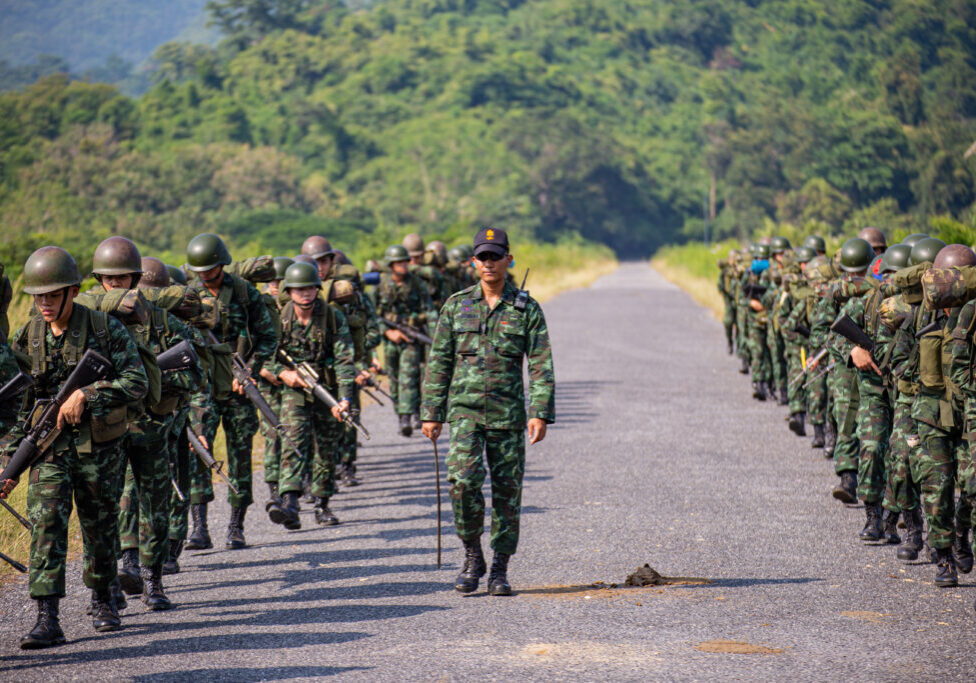Australia/Israel Review
Thai-ed Down
Feb 1, 2007 | Zachary Abuza
On 4 January 2004, a group of armed men raided a Thai Army camp. They were equipped with acetylene torches and bolt cutters; in all they made off with more than 300 M-16s, ammunition and other weaponry. It is the date most commonly used to mark the current manifestation of the insurgency in Thailand’s restive south, dominated by Muslim Malays.
The government of former Prime Minister Thaksin Shinawatra blamed the insurgency on drug addicts and criminals. Only a year earlier, he had declared that the Malay insurgency had been defeated and transferred authority for the deep south from the Army to his former colleagues in the Royal Thai Police (RTP). The Police, notoriously corrupt in Thailand, were ill-equipped to deal with the south, more concerned with consolidating their authority over smuggling and local crime rackets. The Army withheld their human intelligence network hoping that the police would fail in their mission; eager to muscle back in when martial law was instated in early 2004. Insurgency is not new to southern Thailand, but the post-WWII generation of insurgents had been defeated by the mid-1990s through a variety of means: effective uses of amnesties, development projects, security cooperation with Malaysia, good counter-insurgency tactics, and the country’s vast economic growth.
But the unrecognised reason was that the insurgents were so woefully divided over ideology, goals, and tactics that they could never co-operate. The Thais could defeat one splinter group at a time. What Thai security officials concede now is that Islamists were disgusted with the insurgency’s demise, and retreated to the mosques and madrassas, where the insurgency incubated for a decade. In early 2004, the Thai security forces were caught with their pants down. They rounded up the usual suspects of the previous generation, unaware that the insurgency was primarily being run by two groups they never considered threats: the Barisan Revolusi Nasional-Coordinasi (BRN-C) and their youth wing Pemuda, and the Gerakan Mujihidin Islamiya Pattani (GMIP). The government’s missteps in early 2004 further alienated them from the community. The attack on the 14th century Krue Se Mosque in which 33 militants had retreated and the Tak Bai massacre in October 2004, in which 78 unarmed protestors died of asphyxiation in the back of army lorries, led to a rapid decline in cooperation from amongst the Muslim community and open hostility towards government forces. Thaksin’s bullhorn diplomacy and allegations led to bilateral relations with Malaysia spiraling out of control.
What is new about the current conflict is the level and degree of violence, the Islamist agenda of the insurgents, and their unprecedented degree of cooperation and coordination. The situation is not improving, and now entering its fourth year, there is a question of whether the Thai Government can salvage anything.
Growing Violence
Since 4 January 2004, over 1,900 people have been killed in more than 3,000 separate incidents. Nearly half of the casualties have come from amongst the Buddhist population, which numbers roughly 300,000. This has led to de facto ethnic cleansing. Entire Buddhist communities have fled to the relative safety of Hat Yai and Songkhla.
The professional group most targeted has been teachers: to date over 60 teachers have been killed. Schools are often the only manifestation of the Thai state in remote villages, poorly defended, and seen as agents of assimilation. Schools across the south have been shut for months at a time by teachers who refuse to go to school until their security is assured.
Yet more than half of the casualties (roughly 55 percent) of the insurgents have been fellow Muslims. The current insurgents have gone far beyond killing Muslim collaborators and village chiefs. They have killed Muslims who simply take a state salary or work for the government. They have killed and threatened imams who have performed funerals for Muslim collaborators and killed almost 10 imams who teach at government-funded Islamic schools. They have threatened parents to not send their children to any school but the private Islamic schools. They have forced businesses to close on Fridays. Moderate Sufi and Sha’afi Muslims have been routinely targeted. There is a palpable climate of fear in the south. The local Muslims do not trust the Thai security forces who have been abusive and indiscriminate, and yet they fear the insurgents as well. The insurgents are not fighting a Maoist struggle and trying to win hearts and minds; they seem to have little concern about garnering popular support. They have a clear Islamist social agenda that they are slowly implementing.
Recently, women have been told to stop going to state hospitals to give birth, and are told ludicrous things about the infidel Buddhist doctors and nurses and what they will do to newborn Muslim babies. Births are not being registered, which means children cannot attend state schools nor are they eligible for the national healthcare plan. People now turn to Sharia courts, eschewing state institutions. In effect, people are opting out (often out of fear) of the state and turning to a parallel set of rudimentary social institutions that the insurgents are gradually establishing.
What Are Their Goals?
The insurgents have not publicly stated their goals or a platform. Nor has any group claimed any degree of responsibility for the insurgency. Keeping quiet has worked to their advantage, baffling the Thai security forces, and giving them a mysterious aura. The insurgents believed that the overt top-down structure of their predecessor organisations made them vulnerable. They have maintained a very flat structure of autonomous cells.
The long-term goal is clearly to establish an independent state, governed to a degree with Sharia law and other Islamic institutions. It is also clearly a goal to rid the region of what they consider to be corrupting Thai culture.
The short- and medium-term goals of the insurgents are threefold: To make the region ungovernable, to provoke heavy-handed government responses that will further alienate the Muslim community, and to impose their values and authority on the local community.
Insurgent Tactics and Capabilities
The insurgents’ capabilities have clearly improved. What began with small 1-2kg pipe bombs has escalated. Now 10-15kg road-side IEDs are routinely detonated. On several occasions there have been bombs in the 20-40kg range. There have been more than 500 bombings. There have also been many simultaneous bombings: On 3 April 2005, there were three bombs detonated in Hat Yai, including one in the international airport; six more bombs were found or failed to go off. On 16 June 2006, 50 bombs were detonated. Two days later, another 12 bombs were detonated and at least 10 more were defused. In August 2006, all 22 commercial banks in Yala City were simultaneously hit by small bombs.
Still, most victims of the insurgents are killed from gunshot wounds, usually inflicted from a motorcycle. Insurgents hit security forces whenever they have a high probability of success, but they are inherently conservative, more often opting for vulnerable targets: civilians, local headmen, teachers, government officials, and monks. Only 16 percent of the victims have been police or soldiers. Insurgents have stepped up their ability in ambushes and raids on fixed targets. Their confidence has grown, and they will now engage in prolonged firefights. The level of violence in Thailand’s south has never been higher. Nor has it been more brutal. There have been over 24 beheadings. Teachers have been gunned down in front of their students. Buddhist monks, men of the cloth who had never been targets before, are now systematically attacked. The insurgents attempt to maximise casualties in almost all attacks.
The insurgents remain very loosely organised and cells are quite autonomous. There is an historically unprecedented degree of cooperation and coordination amongst the insurgents. They share a commitment to the goal of establishing an Islamic state. They certainly are not trying to discredit one another or take responsibility for the attacks.
Low-level insurgents who have been caught have made similar revelations: they are not paid, and are often treated as though they are expendable. They are given orders by religious authorities whom they do not believe that they can question or contradict. They are usually not provided with safe houses or information to help them if operations go awry.
Thai Counter-Insurgent Efforts
There is considerable hand-wringing amongst diplomats and security analysts that the Thais were once so adept at counter-insurgency, having fought in Laos and against the Thai and Malayan Communist Parties and their own Malay insurgents. Part of the problem is that the Thai military has become a conventional force more concerned with big-ticket purchases to keep up with their ASEAN rivals. The military has been too static and unwilling to take the fight to the insurgents. But the primary reason for the mishandling has been bureaucratic competition, the lack of interagency coordination, the hoarding of intelligence and information, unclear chains of command and poor policies.
There are some 11-12 different agencies or units with over 80,000 personnel in the South, but there is little cooperation among them. Within the Royal Thai Army (RTA), there is the 4th Army, military intelligence, the Special Operations Forces, and now Internal Security Operations Command (ISOC). The Royal Thai Police, too, is divided between Police Region IX, the headquarters in Bangkok, and the Special Branch. These are in intense competition with the Ministry of Justice’s Department of Special Investigations, the National Intelligence Agency, the National Security Council, and the Ministry of Interior. There is almost no intelligence sharing amongst them.
By some accounts, by mid-2005, only 11 percent of violent incidents led to an arrest; and almost none of those arrests led to convictions. The Police have been so unprofessional that they have not been able to compile enough evidence that will stand up in court. While Thai authorities boast that more than 1,700 militants have been detained, few have been leaders or top operatives; almost all are released due to a lack of evidence. The only important arrests to date have taken place in Malaysia; though the Malaysian Government appears to have sent a key leader that they detained, Jekhumae Kuteh, to a third country.
The dismal showing of the police has further eroded public trust in them. Some policies have just been abhorrent, such as death squads. Other policies, such as the re-education camps, have completely backfired. The military forced young men from the villages into compulsory education programs to teach about Thai nationhood. If the men were not members of the insurgency before they went to the camps, they often were afterwards: insurgents considered anyone who returned from the camps to be collaborators with the Thai Government and threatened to kill them unless they joined the insurgency. Human intelligence is all but non-existent because the security forces have so alienated the local population.
The Post-Coup Period
The 19 September 2006 coup that ousted Prime Minister Thaksin Shinawatra and his deputy Chidchai Vanasatidya, provided an opportunity for new policies to be implemented in the south. The Council on National Security (CNS) and the interim Government put in place a two fold strategy: policies designed to win back the support of the alienated Muslim population, and policies designed to improve the Government’s capabilities in going after the insurgents.
The former included a public apology to the Muslim community for the previous government’s policies, the dropping of charges against some 58 Tak Bai protestors, a renewed pledge to solve the 12 March 2004 disappearance of human rights activist Somchai Neelapaijit, the abolition of blacklists, and a willingness to implement some Sharia law.
The Government announced that it would punish wrong-doers and those officials who have abused their power, but in typical Thai fashion, it seems unwilling to apply this policy retroactively and punish anyone responsible for Krue Se or Tak Bai. Until people are not only expelled from government service, but serve jail-time, the local population will continue to believe that there can be no justice. Moreover, the Emergency Decree, still in force, continues to give government security forces blanket immunity.
The interim government understands that it has to find ways to overcome the hoarding of intelligence and the total lack of cooperation amongst the various security agencies. It has also begun to push for a thorough reform of the police.
General Sonthi Boonyaratglin and interim Prime Minister Surayud Chulanont have both made important fence-mending trips to Kuala Lumpur. Sonthi publicly apologised for killing suspects turned over by the Malaysians, a long-time irritant. Malaysian cooperation is essential: they have been reluctant to arrest many individuals wanted by Thai authorities, many of whom are dual nationals.
Unlike the Thaksin regime, the new Government is not in denial about the scope of the problem. It acknowledges the secessionist and Islamist aims. They still have yet to understand the significance of the Muslim-on-Muslim violence, but for the first time it is asking the right questions.
The final thing that the Government has done was to hold a series of Malaysian-brokered peace talks with the “insurgents” in an attempt to negotiate a political settlement. The two sides allegedly came up with “Joint Peace and Development Plan for South Thailand,” after the “insurgents” dropped their demand for an independent Islamic state. Though there was great fanfare about the talks when they were announced in September 2006, they fell apart. For one thing, the “insurgents” that the Government was talking to consisted of the GMP, PULO, BRN-Kongress and Bersatu, i.e., the last generation of insurgents and not the people responsible for the current violence.
The Government demanded that they implement a one-month cease-fire as a show of goodwill and sign of command and control, later reduced to two weeks. The “insurgents” could not deliver a day of peace. If anything, the violence dramatically escalated following the talks.
What is interesting is that the insurgents have shown absolutely no interest in negotiations or in the possibilities accorded by the change in government. Not only has the number of violent incidents not gone down after the coup, it has spiked to record highs.
Clearly the spike in violence is meant to discredit the “insurgents” who had been trying to negotiate with the Government. But it also reflects that right now they have no reason to negotiate: parties come to the table only when they feel that they have nothing more to gain from fighting. That is clearly not the case in the south. The insurgents are able to execute attacks at will, there have been few arrests, the Government still has little understanding of the nature of the insurgent organisation, and the bi-lateral relationship between Malaysia and Thailand is still poor enough that there is little in the way of close security cooperation.
The New Year’s Eve Bombings
Six bombs were exploded nearly simultaneously across downtown Bangkok on New Year’s Eve as revellers began to turn out for dinner and the evening’s festivities. Two more bombs went off at midnight. In total, only three people were killed and 38 people wounded, including six foreigners. Two other bombs were found and defused.
Southern militants were ruled out fairly quickly for several reasons: the bombs were much smaller and much less sophisticated than those the insurgents typically use. The insurgents have always tried to maximise the number of casualties. Second, it would require an infrastructure in Bangkok that few would consider them to have. Third, the low profile targets seemed intended to provoke a domestic response, but not elicit much in the way of international attention.
While they have never taken the option of targeting Bangkok off the table, nor are they ideologically against it, at this time the insurgents really do not need to change their strategy. At this point, the insurgents are winning (they certainly are not losing). They have no reason to change their strategy now, and for the foreseeable future will continue to focus their efforts in the deep south, where they have the infrastructure to attack at will at little cost or risk. The prevailing wind in Bangkok is that the bombings were linked to elite political strife over the September coup.
A Critical Year
Historians often focus on the idea of a “tipping point.” There is a sense that they are coming to one in southern Thailand in 2007. The insurgency is entering its fourth year, nearly 2,000 people have been killed, and the Government seems no closer to coming up with a solution, stopping the bloodshed, or being able to protect the local community. The Thai Government took great satisfaction that in the 2004 elections, 90 percent of the Muslims in the south voted; that was proof that the Muslims were not supportive of secessionism. Indeed the Government asserts that only 2 percent of the Muslims actively support the insurgency.
But at what point will the population become disaffected with the government, its inability to provide security, and the dwindling provision of social services? At what point will people so fear the insurgents that they will simply quit the Thai state and use the parallel Islamic system of schools, courts and medical services? At what point will a growing number of people throw their lot in with the insurgents and support secessionism? The longer that the insurgency is raging, the more in place a parallel infrastructure will be, and the more that opponents, Buddhists, and moderate Muslims will be cowed into submission or vote with their feet.
There is a prevailing concern in Bangkok that the Army will give the “carrots” used to win over the local population some six more months before it simply goes in and launches a new wave of heavy-handed operations. Patience is wearing thin in the military, especially as the violence has spiked after the coup, at a time when many concessions and changes in Thai government policy were being offered. The rate of violence on the part of the insurgents is unlikely to go up considerably more, because of logistical and resource constraints. This will change if there is a large-scale escalation of violence on the Thai side. It will also change if widespread communal violence erupts in 2007. But even the current rates of violence are a threat to the Thai state. At present, it is losing the south.
![]()
Dr. Zachary Abuza is a leading scholar of terrorism in Southeast Asia and the author of Militant Islam in Southeast Asia: Crucible of Terror. He is Associate Professor for Political Science and International Relations at Boston’s Simmons College, but has been on study-leave in Thailand in recent months. He will be visiting Australia in late February.

